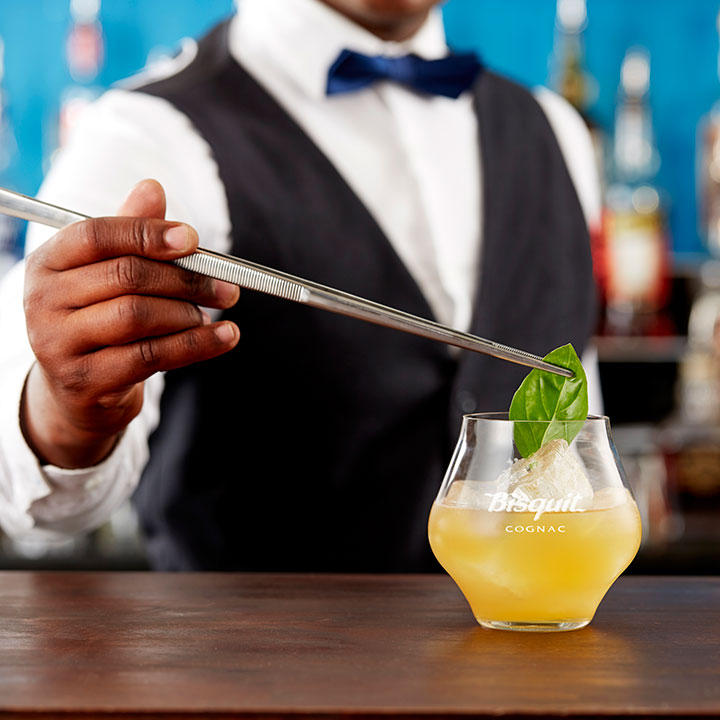This World Cognac Day, coming up on 4 June 2017, Denis Lahouratate, the Maitre de Chai (Cellar Master) of Bisquit Cognac, outlines five facts about Cognac that will be sure to impress your friends and colleagues next time you’re sipping your favourite eaux-de-vie.
Here’s how to become a Cognac connoisseur overnight
-
You can thank wine lovers of the 1600s for Cognac
The origin of Cognac dates back to the 16th Century, when Dutch settlers came to this French region to purchase salt, wood and wine. Preserving the wine through long distances of travel proved challenging, and as such, the wine was distilled into eaux-de-vie to preserve the liquid. Eventually, they realised that a second distillation made for an even finer, more elegant and delicious product…and this was the birth of brandy, and Cognac, a prestigious and revered variety.
-
It is aged for almost three years under the strictest criteria
Brandy is made all across the globe, but only brandy made in the Cognac region of France, and under the strictest guidelines, can be called ‘Cognac’. According to regulation, Cognac must be aged for at least 30 months in French oak coming primarily from forests in specific regions in central France. Cognac must be created through double distillation in traditional copper caskets and the producers may only distil between November 1 and March 31, following the harvest.
-
It’s known as “barman’s best friend”
Many people believe that Cognac should only be enjoyed neat with a few ice cubes, but the use of Cognac in cocktails goes back as far as the early 1800s. Known as a “barman’s best friend” for its exceptional mixability, Cognac was extremely sought after in America, where the cocktail culture was born. Its unique balance of fruit flavours, aged in French oak, gives Cognac its characteristic colour, aromas and bouquet. This diverse spirit became a signature ingredient in some of America’s classic cocktails such as the Sidecar and original Sazerac.
-
You must enjoy Cognac with your eyes, nose and palate
Swirl the glass and look at the beads of liquid on the glass…these are the ‘legs’, which indicate the complexity of the Cognac. Look at the colour – is it a light golden colour or a deeper hue? A darker Cognac might be an indication that it has aged for longer (or, that caramel has been added to it). Then use your nose; hold the glass at chin level, inhale the aromas and try to identify what you can smell. Flowers and fruits often indicate a younger Cognac, and richer, stickier notes imply an aged Cognac. Also look out for hints of vanilla or nuts, which might be present. Lastly, remember that Cognac is sipped and savoured, rather than drunk. Take a sip and keep the liquid in your mouth to enjoy the different nuanced flavours on your palate.
-
Enjoy it best in a rounded glass at a cooler temperature
If you’ve been served your Cognac in an ordinary tumbler, casually ask if your host has a tulip glass or a balloon snifter available, so that you can enjoy your Cognac to its fullest. The tradition of consuming Cognac with many ice cubes or swirling it in the palm of a warm hand also does not bring out the best in the cognac for ultimate enjoyment.
To embody the best way to enjoy Cognac, The House of Bisquit Cognac has developed a special serving ritual that embodies the best way to enjoy Cognac. The Bisquit Cognac Perfect Serve ritual is simple, yet sophisticated:
Step 1: Place the Cuillère de Richesse (spoon of richness) over the cognac glass.
Step 2: Gently place one ice cube onto the stainless steel plate.
Step 3: Slowly pour a serving of Bisquit V.S.O.P over the ice cube. The Cuillère de Richesse will guide the cognac into the glass through the opening in the spoon.
Step 4: Enjoy your cognac at the perfect temperature!
For more information and cocktail recipes, please follow Bisquit Cognac on Facebook or Twitter. Bisquit Cognac can be purchased online from Vinoteque or from leading liquor retailers. Join the conversation at #bisquitcognac.

